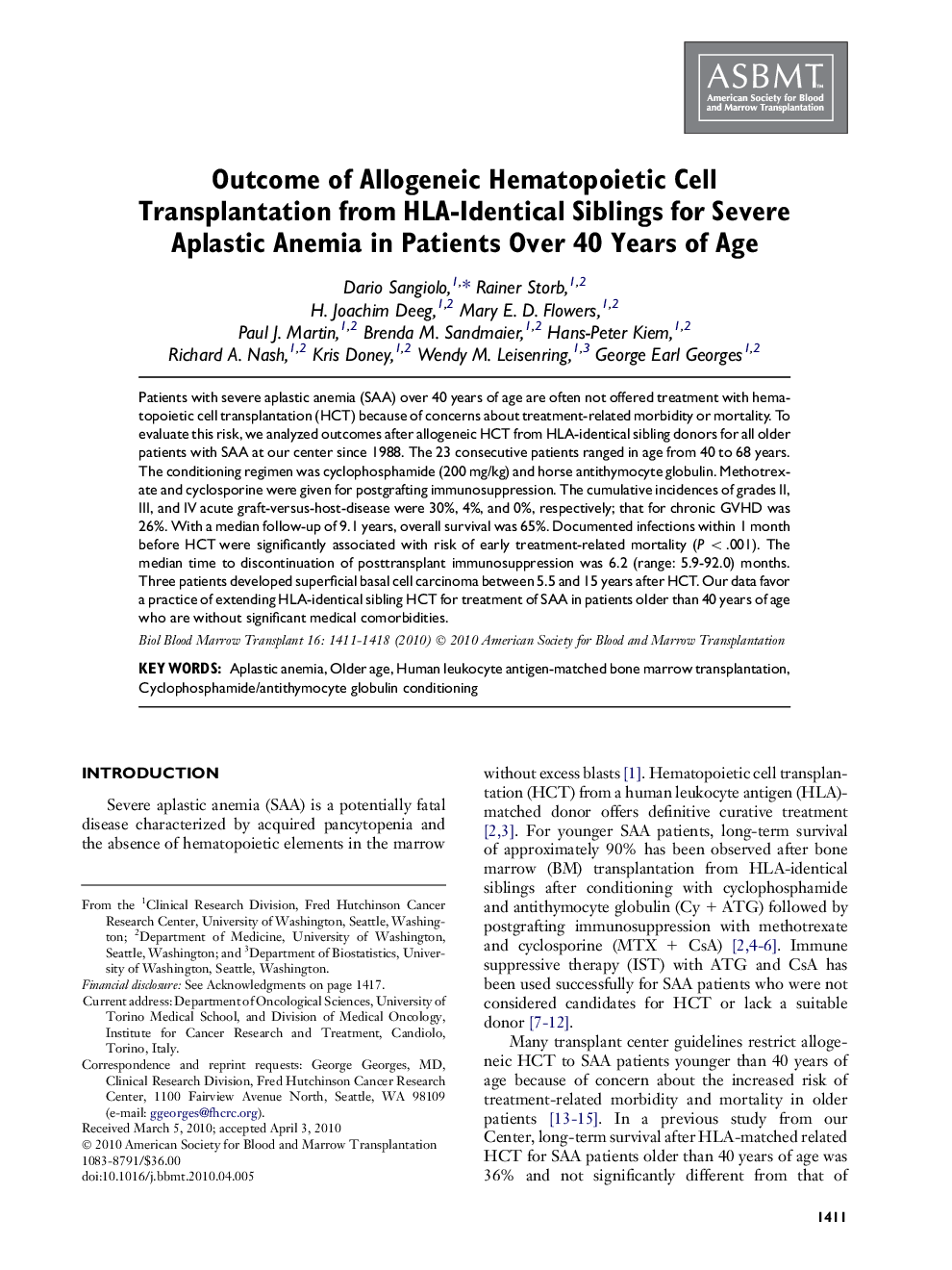| Article ID | Journal | Published Year | Pages | File Type |
|---|---|---|---|---|
| 2103783 | Biology of Blood and Marrow Transplantation | 2010 | 8 Pages |
Patients with severe aplastic anemia (SAA) over 40 years of age are often not offered treatment with hematopoietic cell transplantation (HCT) because of concerns about treatment-related morbidity or mortality. To evaluate this risk, we analyzed outcomes after allogeneic HCT from HLA-identical sibling donors for all older patients with SAA at our center since 1988. The 23 consecutive patients ranged in age from 40 to 68 years. The conditioning regimen was cyclophosphamide (200 mg/kg) and horse antithymocyte globulin. Methotrexate and cyclosporine were given for postgrafting immunosuppression. The cumulative incidences of grades II, III, and IV acute graft-versus-host-disease were 30%, 4%, and 0%, respectively; that for chronic GVHD was 26%. With a median follow-up of 9.1 years, overall survival was 65%. Documented infections within 1 month before HCT were significantly associated with risk of early treatment-related mortality (P < .001). The median time to discontinuation of posttransplant immunosuppression was 6.2 (range: 5.9-92.0) months. Three patients developed superficial basal cell carcinoma between 5.5 and 15 years after HCT. Our data favor a practice of extending HLA-identical sibling HCT for treatment of SAA in patients older than 40 years of age who are without significant medical comorbidities.
